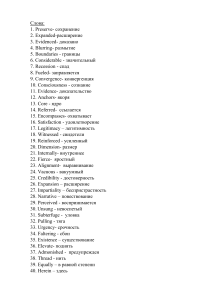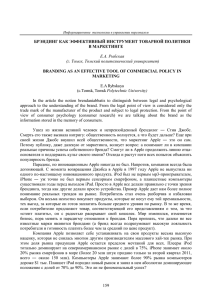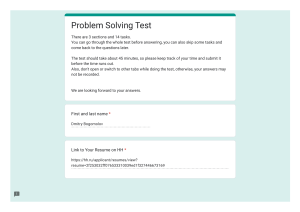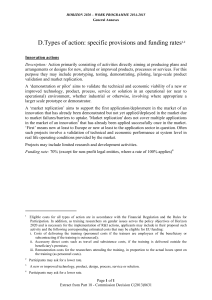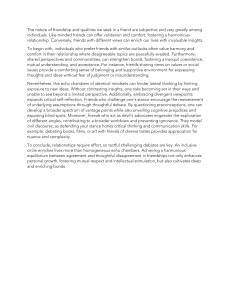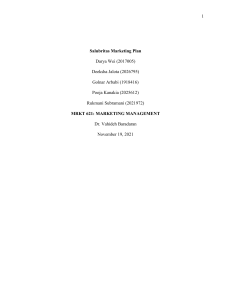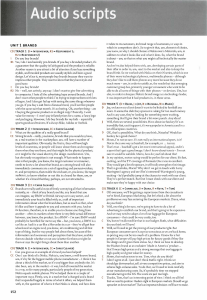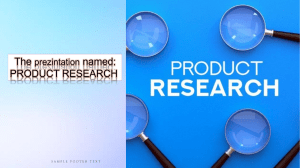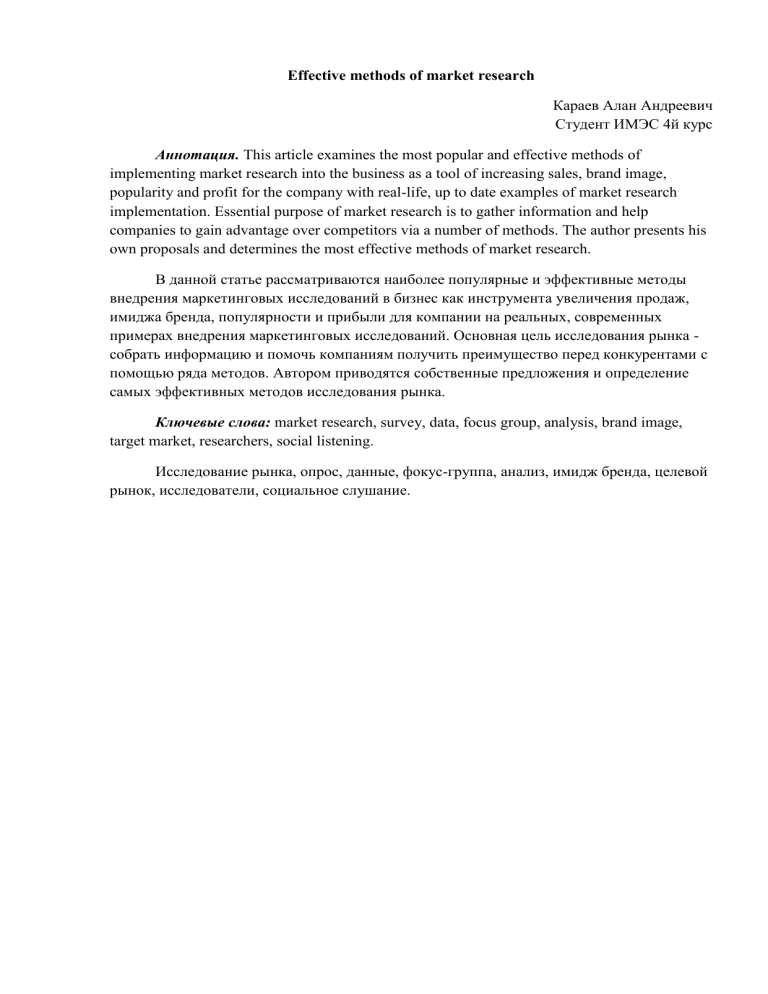
Effective methods of market research Караев Алан Андреевич Студент ИМЭС 4й курс Аннотация. This article examines the most popular and effective methods of implementing market research into the business as a tool of increasing sales, brand image, popularity and profit for the company with real-life, up to date examples of market research implementation. Essential purpose of market research is to gather information and help companies to gain advantage over competitors via a number of methods. The author presents his own proposals and determines the most effective methods of market research. В данной статье рассматриваются наиболее популярные и эффективные методы внедрения маркетинговых исследований в бизнес как инструмента увеличения продаж, имиджа бренда, популярности и прибыли для компании на реальных, современных примерах внедрения маркетинговых исследований. Основная цель исследования рынка собрать информацию и помочь компаниям получить преимущество перед конкурентами с помощью ряда методов. Автором приводятся собственные предложения и определение самых эффективных методов исследования рынка. Ключевые слова: market research, survey, data, focus group, analysis, brand image, target market, researchers, social listening. Исследование рынка, опрос, данные, фокус-группа, анализ, имидж бренда, целевой рынок, исследователи, социальное слушание. We live in a world that’s overflowing with information. Going through all the noise to extract the most relevant insights on a certain market or audience can be tough. Market research is an organized effort to gather information about target markets and customers That’s where market research comes in – it’s a way for brands and researchers to collect information from target markets and audiences. Once reliant on traditional methods like focus groups or surveys, market research is now at a crossroads. Newer tools for extracting insights, like incorporating social media data, have joined the array of market research methods available. Here, I would like to explain what market research is and the different methods you can choose from to carry out any research you would like. Primary vs secondary market research Market research can be split into two distinct sections: primary and secondary. They can also be known as field and desk, respectively Primary (field) research Primary research is one that involves the gathering of fresh data, i.e. when data about a particular subject is collected for the first time Primary market research is research you carry out yourself. This could include running your own focus groups or conducting surveys. The ‘field’ means going out into the «field» (street) collect data. Secondary (desk) research There are plenty of different types of open data that are useful for market research: government databases, polling data, “fact tanks” like Pew Research Center, and more. Furthermore, APIs grant developers programmatic access to applications. A lot of this data is free, which is a real bonus. Secondary research is a research method which involves the use of data, already collected through primary research. Secondary market research is a research carried out by other people that you want to use. This could include studies carried out by researchers or financial data released by companies. Market research method The methods in this list cover both areas. Which ones you want to use will depend on your aims. Let’s have a browse through and see what market research methods include. Focus groups A simple concept but one that can be hard to put into practice. People are gathered into a room to be surveyed and recorded regarding specific objectives of the research. (new product, votes) For some it’ll be new product ideas, for others it might be views on a political candidate. Participants are chosen based on certain criteria, such as demographics, interests, or occupation. A focus group’s strength is in the natural conversation and discussion that can take place between participants (if they’re done right). Focus groups can encourage participants to talk about things they might not have otherwise, and they might be impacted by others in the group or the presence of the researcher. Surveys A good survey question is one that helps you get clear insights and business-critical information about your customers, including: Who your target market is How you should price your products What is stopping people from buying from you Why visitors leave your website In survey research. survey questions are given to respondents (in person, over the phone, emailed, or an online form). Questions can be close-ended or open-ended. As far as close-ended questions go, there are many different types: ‘yes’ or ‘no’ Multiple choice Rating scale Likert scale (common version is five options between ‘strongly agree’ and ‘strongly disagree’) Surveys are massively useful because of the range of question formats. Knowing how to mix and match them to get what you need takes consideration and thought. Different questions need the right set up. It’s also about how you ask. Good questions lead to good analysis. Writing clear, concise questions that abstain from vague expressions and don’t lead respondents down a certain path can help your results reflect the true colors of respondents. In comparison to a questionnaire or survey that have a rigid set of questions, a focus group can go off on tangents the organizer could not have predicted (and therefore not planned questions for). This can be good in that unexpected topics can arise, or bad if the aims of the research are to answer a very particular set of questions. ! Social media listening Social media has reached a point where it is seamlessly integrated into our lives. And because it is a digital extension of ourselves, people freely express their opinions, thoughts, and hot takes on social media. Because people share so much content on social media and the sharing is so instant, social media is a treasure trove for market research. There is plenty of data to tap into and dissect. By using a social listening tool, like Consumer Research, researchers are able to identify topics of their interest, then analyze relevant social posts. For example, they can track brand mentions and what consumers are saying about the products owned by that brand. Social media listening democratizes insights, and is especially useful for market research because of the vast amount of unfiltered information available. Because it’s unprompted, you can be fairly sure that what’s shared is an accurate account of what the person really cares about and thinks (as opposed to them being given a subject to dwell on in the presence of a researcher). ! Interviews In interviews, the interviewer speaks directly with their respondent. This type of market research method is more personal, allowing for communication and clarification, making it good for open-ended questions. Furthermore, interviews enable the interviewer to go beyond surface-level responses and investigate deeper. However, the drawback is that interviews can be time-intensive and costly. Those who opt for this method will need to figure out how to allocate their resources effectively. You also need to be careful with leading questions, or simply poor ones, that lead to useless results. Here’s a good intro to leading questions. Experiments and field trials Field experiments are conducted in the participants’ environment. They rely on the independent variable and the dependent variable – the researcher controls the independent variable in order to test its impact on the dependent variable. The key here is to try and establish whether there is causality going on. For example, take Hofling’s experiment that tested obedience, conducted in a hospital setting. The point was to test if nurses followed authority figures (doctors) if the authority figures’ rules violated standards (The dependent variable being the nurses, the independent variable being a fake doctor calling up and ordering the nurses to administer treatment However, there are key strengths and limitations to this method. Behavior in a field experiment is more likely to reflect real life because of its natural setting. (higher ecological validity than a lab experiment). There is less likelihood of demand characteristics affecting the results, as participants may not know they are being studied. This occurs when the study is covert. But, there is less control over extraneous variables that might bias the results. This makes it difficult for another researcher to replicate the study in exactly the same way. There are also massive ethical implications for these kinds of experiments, and experiments in general (especially if people are unaware of their involvement). Don’t take this lightly and be sure to read up on the all the guidelines that apply to the region where you’re based. Observation Observational market research is a qualitative research method where the researcher observes their subjects in a natural or controlled environment. This method is much like being a fly on the wall, but the fly takes notes and analyzes them later. In observational market research, subjects are likely to behave naturally, which reveals their true selves. They are not under much pressure. Although if they’re aware of the observation, they can act differently. This type of research applies well to retail, where the researcher can observe shoppers’ behavior by day of week, by season, when there are discounts offered, and more. However, observational research can be time-consuming and researchers have no control over the environments they research. Competitive analysis Competitive analysis is a highly strategic and specific form of market research, in which the researcher analyzes their company’s competitors. It is critical to see how your brand stacks up to rivals. Competitive analysis starts by defining the product, service, or brand, and market segment. There are different topics to compare your firm with your competitors. It could be from a marketing perspective: content produced, SEO structure, PR coverage, and social media presence and engagement. It can also be from a product perspective: types of offerings, pricing structure. SWOT analysis is key, assessing strengths, weaknesses, opportunities, and threats. Analyze data data is like a puzzle piece that can help reveal the full picture of market research insights. Essentially, it indicates the results. Paired with other market research data, it helps researchers gain a better picture of action and consequence. It’s also important for understanding your customers, their buying habits, and how these are changing over time. Choosing a market research method Not all methods will be right for you situation or your business. Once you’ve looked through the list and seen some that take your fancy, spend more time researching each option. You’ll want to consider what you want to achieve, what data you’ll need, the pros and cons of each method, the costs of conducting the research, and the cost of analyzing the results. Get it right though, and it’ll be worth all the effort.
